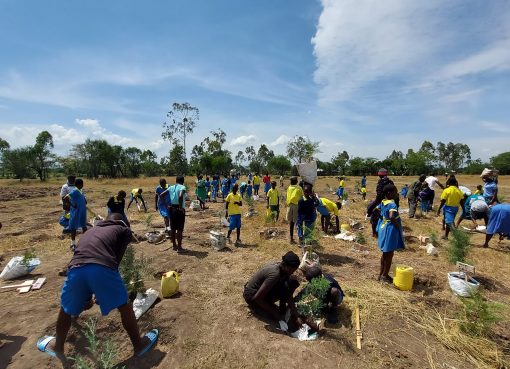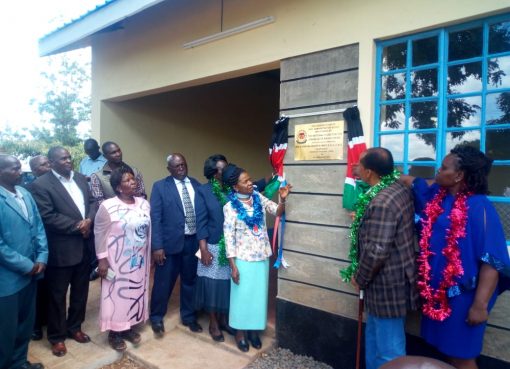The Ministry of Tourism and Wildlife has launched a strategy to address human-wildlife conflict that affects people living in conservation areas in addition to rolling out a new improved Technology-driven Compensation Scheme for those affected.
The Ministry in collaboration with Kenya Wildlife Service, Wildlife Research and Training Institute, and the Nature Conservancy, Human-Wildlife Strategy (2024-2033), aims to increase space and connectivity for protected areas and to recognise wildlife conservation land use options through appropriate policy.
Further, the Ministry will also increase funding for prevention, response, and compensation while improving communities’ attitudes and perceptions by handling their conflict incidents better and sharing benefits to offset costs.
Tourism and Wildlife Cabinet Secretary Alfred Mutua noted that it is important to mitigate conflict by not only ensuring the safety of humans and wildlife but also to provide for those impacted.
Dr Mutua disclosed that Kenya is among 10 mega-biodiverse nations with over 35,000 species of flora and fauna with over 61 percent of wildlife in key landscapes declining since 1970 which emphasizes the urgency of effective intervention.
He admitted that the conservation is facing challenges due to diminishing space for conservation which results in increasing human population pressure, climate change, loss of migration and dispersal areas, and pressure from many other human activities.
The CS declared that the Ministry is taking a keen interest in the mitigation of Human-Wildlife Conflicts (HWC) since the challenges have increased and are affecting the wildlife conservation sector.
“We need to find ways of balancing human populations, development, and the spatial needs of wildlife, which is Kenya’s heritage and life,” stressed Dr Mutua.
He at the same time insisted that his Ministry needs a strategic direction that keys in new ideas and opportunities to address the issue of expansion of space for conservation to reduce Human Wildlife Conflicts.
Further, Dr Mutua added that the new Strategy marks a critical step towards achieving the balance, focusing on long-term strategies that address the root cause of HWCs and promote a harmonious co-existence between communities and wildlife.
In a speech read on his behalf by the State Department for Wildlife Principal Secretary Silvia Museiya during the official opening of the Human-Conflict Strategic and the Human-Wildlife Conflict Compensation Scheme of the year 2024-2033, the CS stated that the government is keen to promote sustainable collaboration with communities, partners, and stakeholders in conservation including Ab Entheos, Minet and Pula who have played a critical role in strategic development.
“Wildlife plays a crucial role in the local and national economies with 80 percent of tourism revenue coming from wildlife and employment creation, making it a vital sector,” said Dr. Mutua, affirming that the scheme will leverage technology and improve community involvement for efficient reporting, verification and timely settlement of claims.
He added that the HWC has inducted all community wildlife conservation committees and compensation schemes which will be rolled out across the country to support the digitized compensation scheme in the targeted counties.
The CS reiterated that the Ministry is undertaking policy changes including the development of the integrated policy on Natural Resource Management that will address the cause root of HWCs and is also reviewing the legislative and regulatory issues that will support HWCs and Community Involvement in conservation and recruit 1500 rangers and officers who will improve response by Kenya Wildlife Services (KWS).
“Additionally, the Ministry will review the Wildlife Conservation and Management Bill of 2024 that will enhance input access and benefit sharing bill, 2024,” he said.
According to the CS, the Ministry has also allocated resources to repair fences while erecting new ones around parks and national reserves while continuously engaging stakeholders.
Mutua also mentioned that the Ministry is improving education and awareness, and developing innovative technologies through research by Wildlife Research Training Institute and other research partners.
In her own remarks, Museiya stated that the Ministry has set to launch the strategy plan for the Ministry and Scheme Administration.
She challenged the partners who are supporting the strategy and those who do not, to get out of training and conferences and visit the ground, insisting that the pilot compensation must work and be an example to the rest of the world.
Meanwhile, the Kenya Programme Director at Nature Conservancy, Munira Anyonge-Bashir believed that Nature Conservancy, that is, protection of wildlife and the well-being of communities are interconnected terming the collaborative initiative as a crucial step towards creating a sustainable framework for human-wildlife coexistence in Kenya.
“Nature Conservancy is actively participating in the development of the strategy to foster a future where both human and wildlife thrive together and it is also committed to the people and wildlife of Kenya by ensuring it extends beyond conservation,” she explained.
Anyonge-Bashir revealed that the Human Wildlife Compensation Scheme will be administered by a private claims administrator comprising AB Entheos, Minet Kenya and PULA Advisors to leverage technology and involve the community for efficient verification and settlement claims.
The Director also acknowledged that the scheme will cover incidences of human death and injury, property damage, crop damage, livestock predation, and depredation as it will also benefit all Kenyan citizens in the 6 hotspot counties including Kajiado, Taita Taveta, Meru, Laikipia, Narok, and Baringo.
By Sharon Atieno





